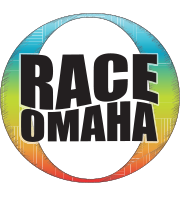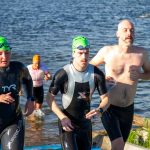
Recovery. It Matters!
Reasons people don’t recover well are numerous. Don’t think about it. Don’t have time. Don’t know what to do, etc. The longer and more intense the workout or race, the more important recovery is. The older you are, the more important intentional recovery is. The closer together your workouts are, the more vital recovery becomes.
We don’t get stronger when we workout. We get weaker. I remember my daughter when she was about eight, picking up a dumbbell and starting to do bicep curls, saying to me, “Look Dad, I’m getting stronger.” I replied, “No, you’re not.” She said, “Yes, yes I am! Look I’m lifting weights!” I said, “And you’re getting weaker.” We went back and forth one more time and then I thought, just wait…about 20 more seconds. Though the dumbbell was only a few pounds, the reps slowed down and then stopped.
“So, Kristi, did you get stronger or weaker?” A humbled little girl said, “Weaker.” That’s a snapshot of what’s true of all of us when we workout. The workout makes us weaker. Tired. It micro-tears our muscles. It causes us to be a bit dehydrated. The weariness is physical and can be mental and perhaps emotional.
Gains are made, not when you work out, but after you’ve fully recovered. It’s like two steps backward and then, three steps forward…so you end up one step ahead. And you do that over and over, slowly getting better and faster over time, provided, you recover.
So, I thought I’d list what I do, or what I’ve done, to aid in recovery. These are not in order of importance, but we’ll start with one that IS super important!
- Sleep. This may be the “king” of recovery. Do whatever you can to get as much as you can for as many nights as you can after a big effort, whether training or racing. This is HUGE!
- Active Movement. Walks are great. You know the soreness that comes with big-time training or racing? Of course, you do. Going for long gentle walks the day or two after can work miracles. More brisk walks can follow. If racing 70.3s or Ironman races, going for walks for several days following the races does wonders. We could also add gentle stretching, yoga and Pilates under active movement with some easy swimming as well. Just laying around, even though that feels really good, only slows down the healing/recovery process.
- Elevation. Lay on the floor on your back and scoot your butt up to the wall, extending your legs up that wall. Hold them there for 5-15 minutes to let gravity do it’s thing in helping the blood flow to carry out that waste.
- Compression. Compression socks, tights and boots all help with blood flow and circulation. I often combine number three above with compression to maximize my time. You can put socks on right after a race or long workout and let them start doing what they do! The sooner you utilize compression the better.
- Electro-Stimulation. Often, these devices have “Recovery” modes you can dial in. Just be careful that you’re not just working your muscle too hard with the contractions from the stimulation. You want them to recover, not get another workout.
- Nerve Stimulation. The Firefly Device causes micro-circulation to take place at a high level. The peroneal nerve on the side of your lower leg is stimulated causing the increased blood flow without taxing your muscles. It’s a great invention.
- Water Running. I could have included this under number two, but I’ll let it stand out because it is just so good for recovery. It’s as boring as it is gets, but if you can handle it mentally, it’ll help your body bounce back. Deep water is wonderful if your legs are really trashed but waist or chest deep is also great. Use a water running belt if in deep water to keep you upright, simulating real running closely.
- “The Stick”. You’ve probably seen it and may have one. It’s just what it says it is. It’s a stick, with handles and plastic rollers between the handles. You press it into your muscles and bring it over the area. I’ve been using one for years and I love it.
- “Foam Roller”. Same idea as The Stick. It’s a tube of hard foam that you put on the floor and roll your body over it. Great for calves, quads, IT bands, etc.
- Ice. There’s a growing debate about ice. It’s been used for decades. Picture that MLB pitcher, coming out of the game and sitting in the dugout with a big icepack on his shoulder, not to treat an injury, but just for recovery. Some say, however, low-grade inflammation is the body’s natural way of bringing healing and recovery, so don’t ice. Others are more traditionalist. You decide.
- Massage. After many races, massage therapists have been set up at the race site. Every time I’ve taken advantage of a short massage, my recovery time is shortened. Feels great too, in a painful kind of way. Ha.
- Diet. In my earlier days, after a race, I’d get the biggest Dairy Queen Blizzard made. It was seriously like four pounds of ice cream and Snickers mixed together! At times, I’ve just tossed in French fries and a huge hamburger as well! I would have been much smarter to eat really clean for the following two to three days to give my body what it desperately needed for quicker and more effective recovery. I love Hammer Nutrition’s “Recoverite”. Drink it within 30-60 minutes of finishing a race or big workout and you’ll start that recovery process almost immediately after the big effort.
- A Graston/Scraping Tool. You can YouTube this (and most of the rest of these) to learn more about scraping tools. They break up adhesions and create mild inflammation/blood flow that increases recovery and healing. They can be painful and need to be used correctly.
- Emotional and mental recovery is also needed. Do something completely different, away from training and racing like round of golf. Pull out the tripod and canvas and paint. Get out that guitar and belt out some songs or maybe write a new one. You get the idea. Athletes I’ve coached have had “post-Ironman depression.” A huge goal that they’ve thought of everyday for seven months (or longer) is now over. Race day, they experience every emotion possible. Now, the race is over. Goal met. Now what? There’s an empty place inside. Some mild depression. It’s real. So, stay fresh emotionally and mentally by doing other things you enjoy whenever you need to. If you’re dreading that next workout and the next and the next, maybe you need a break.
Proper recovery is the key to improving and staying in the game for the long-haul. I’m already looking forward to next season. It will be my 28th season, I think. Recovery protocols MUST be at the very top of my, “Train Smarter, Not Harder” approach. Keep your physical body fresh through wise recovery and your brain and heart eager for more! Recovery! It’s what for dinner!










